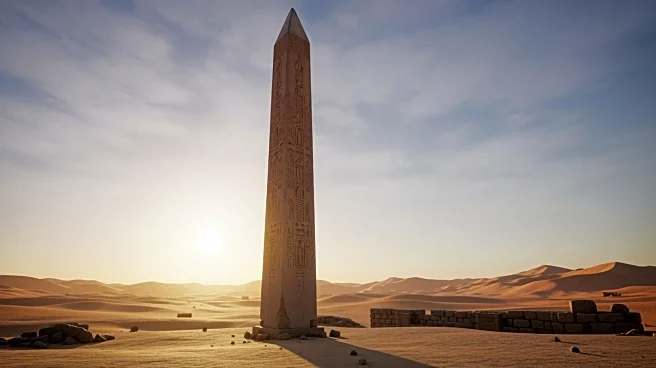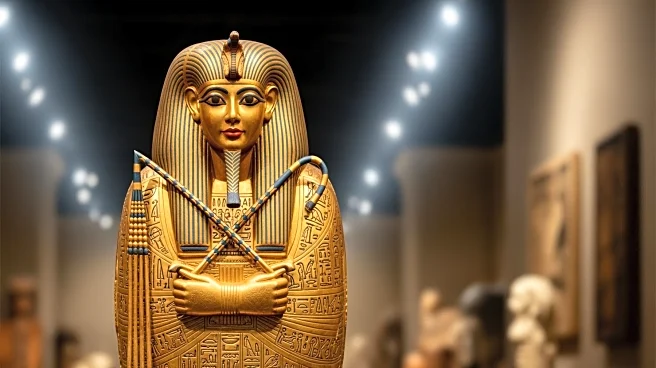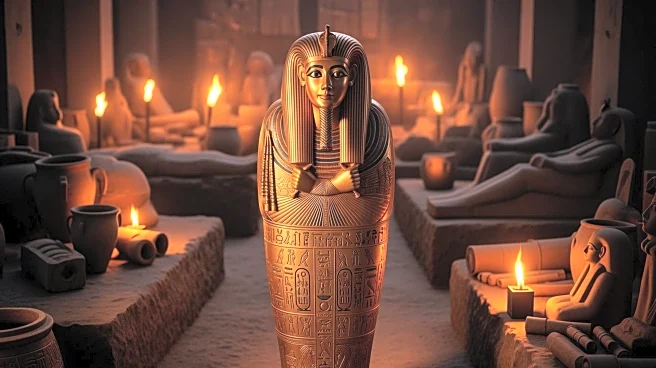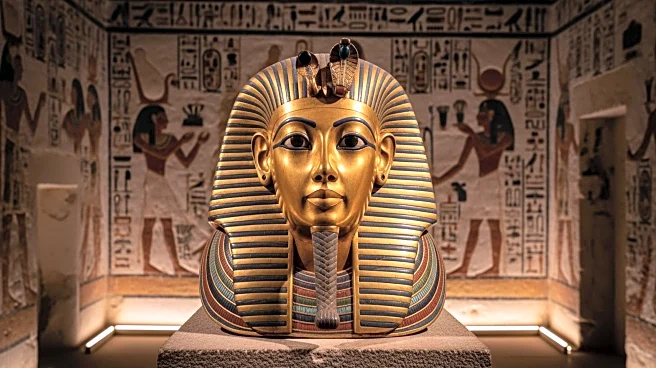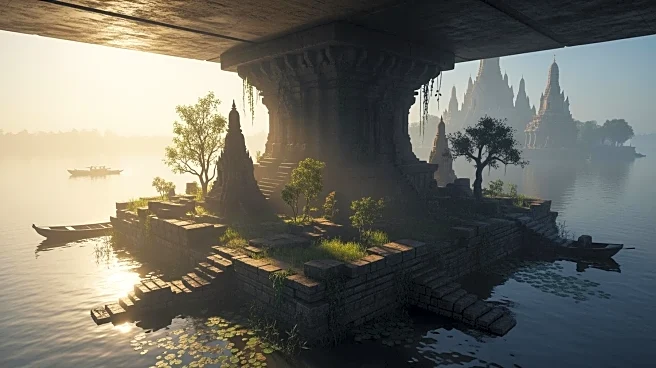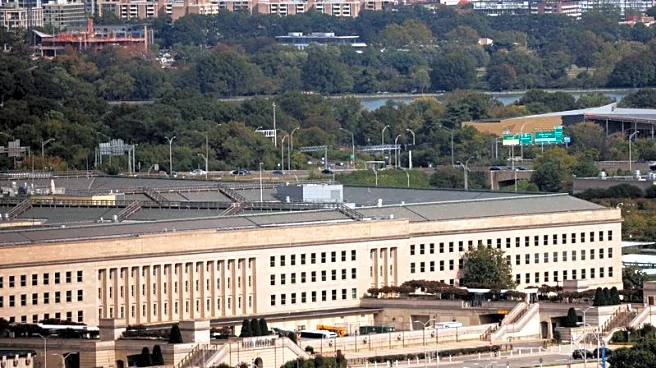What's Happening?
Egyptian archaeologists have uncovered a 3,000-year-old fortress at the Tell El-Kharouba site in North Sinai, described as one of the largest and most significant in the country. The fortress, dating back
to the New Kingdom period (1550 B.C.E. to 1070 B.C.E.), spans approximately 85,000 square feet and features a series of defensive structures, including 11 towers and a thick southern wall. The site, located near the town of Sheikh Zuweid, was strategically positioned along the Way of Horus, a crucial trade route connecting Egypt with the Levant, Anatolia, and Mesopotamia. Excavations have revealed various artifacts, such as pottery, storage vessels, and a vessel inscribed with the name of Pharaoh Thutmose I. The discovery highlights the advanced military planning of ancient Egyptian rulers, who constructed a network of fortresses to protect their eastern borders.
Why It's Important?
The discovery of this fortress provides significant insights into the military and architectural prowess of ancient Egypt. It underscores the strategic importance of the region and the sophisticated methods employed by Egyptian rulers to safeguard their territories. The findings contribute to a deeper understanding of the New Kingdom's geopolitical landscape and its interactions with neighboring regions. For historians and archaeologists, the site offers a wealth of information about the daily lives of soldiers and the logistical operations of ancient military installations. The artifacts and structural features could also enhance knowledge about trade and cultural exchanges along the Way of Horus.
What's Next?
Further excavations are planned to uncover the remaining parts of the fortress and explore a nearby military port believed to be connected to the site. These efforts aim to provide a more comprehensive understanding of the fortress's role and its historical context. The ongoing research may also lead to new discoveries about the broader network of fortifications along Egypt's eastern frontier, offering additional insights into the region's ancient history.
